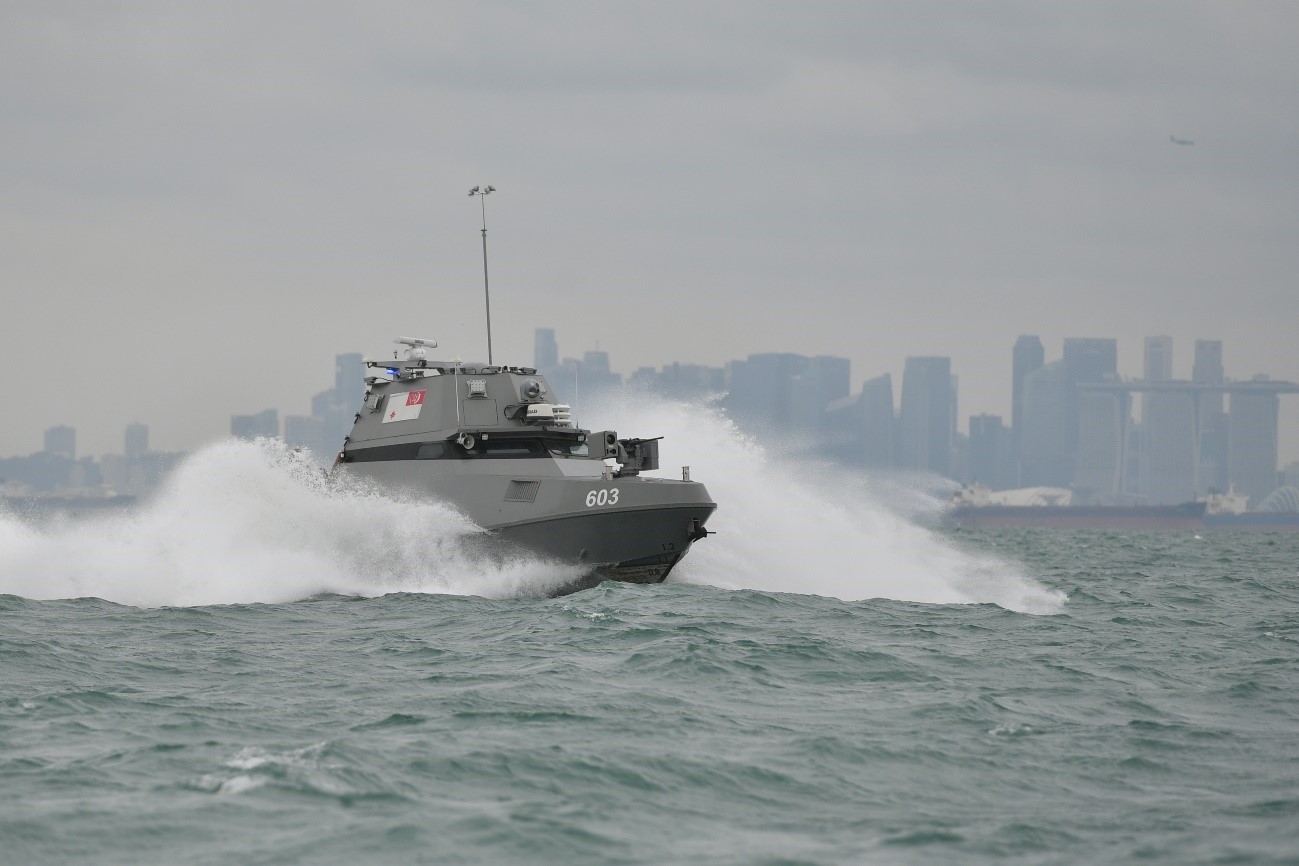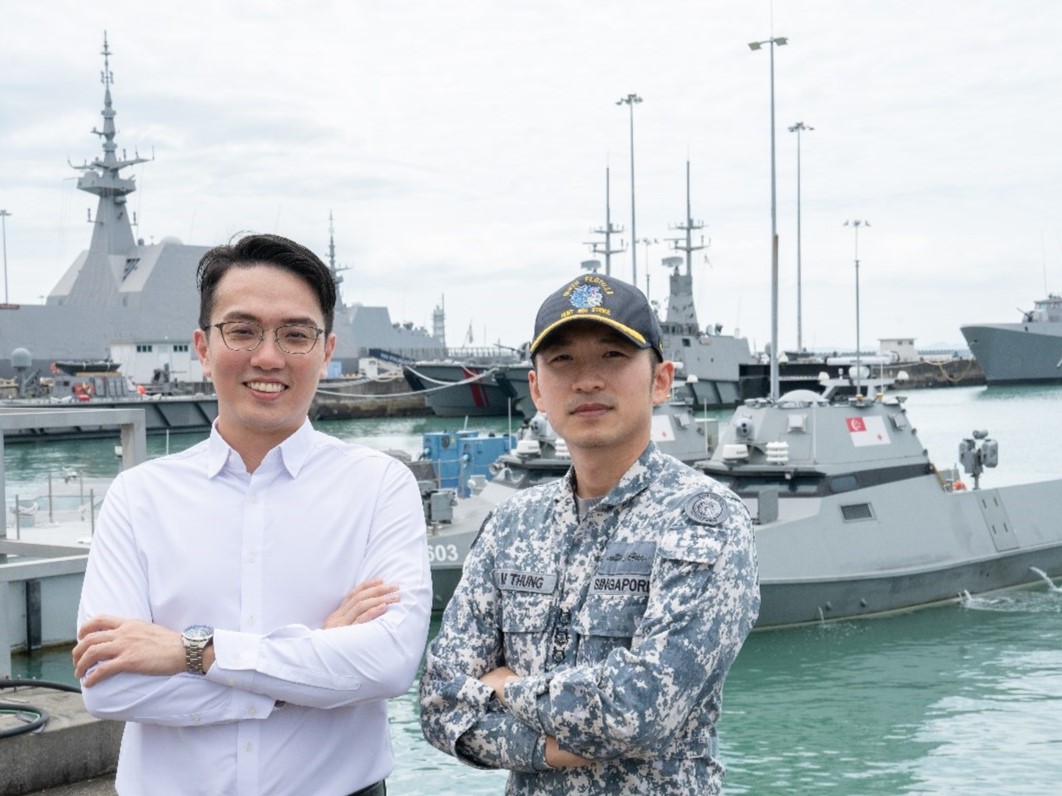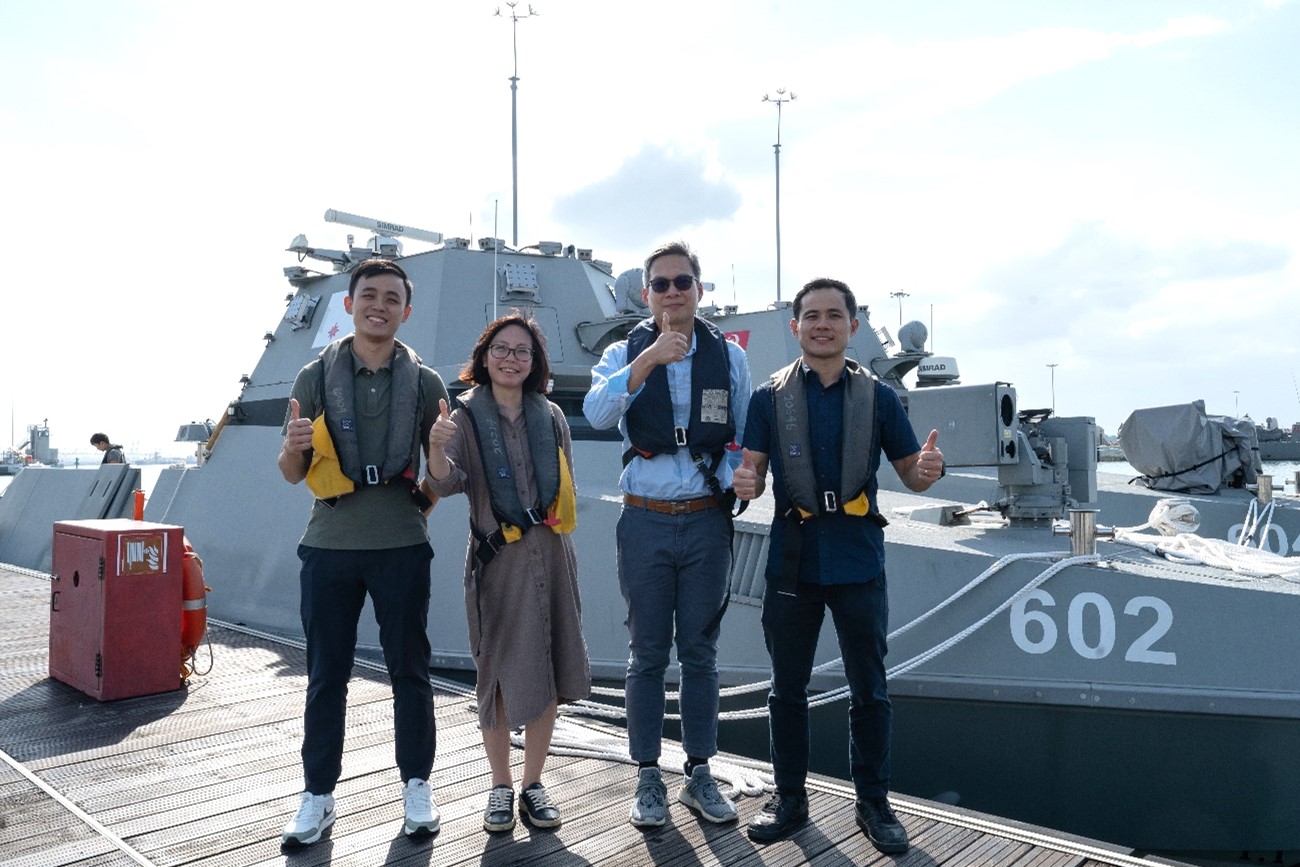17 Feb 2025
Patrolling Singapore’s busy waters is a complex challenge, requiring swift and effective responses amid dense maritime traffic and unpredictable conditions. Meet the Maritime Security Unmanned Surface Vessel (MARSEC USV) — the first of its kind designed to operate autonomously in Singapore’s complex maritime environment. Jointly developed by our team of engineers, the Republic of Singapore Navy (RSN), DSO National Laboratories, and ST Engineering, the MARSEC USV enhances patrol and surveillance operations while reducing risks to personnel.
At the core of the MARSEC USV is a Command, Control, and Communications (C3) system developed by a team of DSTA engineers from Naval Systems and C3 Development Programme Centres. This enables RSN operators to remotely plan patrols, track vessels of interest, and respond to security incidents in real time. Designed for operational efficiency, the system allows a lean two-man crew to monitor the USV, issue warnings, investigate threats, and conduct security actions remotely.
The MARSEC USV is equipped with an autonomous navigation system, which integrates data from perception sensors, maritime charts, Automatic Identification Systems (AIS), and Differential Global Positioning Systems for safe and predictable navigation through congested waterways. The system also includes an indigenously developed Collision Detection and Collision Avoidance (CDCA) algorithm. Using a rules-based approach, the CDCA algorithm ensures compliance with international maritime safety regulations, allowing the USV to assess and respond to traffic situations like a manned vessel.
However, validating the MARSEC USV’s autonomous capabilities in such a dense and dynamic maritime environment posed a significant challenge, particularly in the absence of established global standards. Chng Zhen Hao, Head Capability Development (Unmanned Maritime Systems), Naval Systems Programme Centre, explained, “To overcome this, we developed a Verification and Validation (V&V) framework with the RSN, adapting best practices from other autonomous domains, conducting extensive virtual testing, and carrying out extensive sea trials.” The verification process incorporated a multi-layered approach – from high-fidelity simulations to real-world operational testing – ensuring the USV’s ability to operate safely and predictably. The team also conducted peer reviews with global defense and maritime experts, and integrated insights from these reviews to further refine the methodology to strengthen confidence in the system’s robustness.
These efforts reaffirmed that the MARSEC USV is well-positioned to enhance maritime security while paving the way for future advancements in autonomous naval operations.

The MARSEC USV operating in the Singapore Strait. [Photo: MINDEF]

The successful deployment of the MARSEC USVs is testament to the strong ops-tech partnership between DSTA and the Navy over the years.

The DSTA team behind the MARSEC USV.
